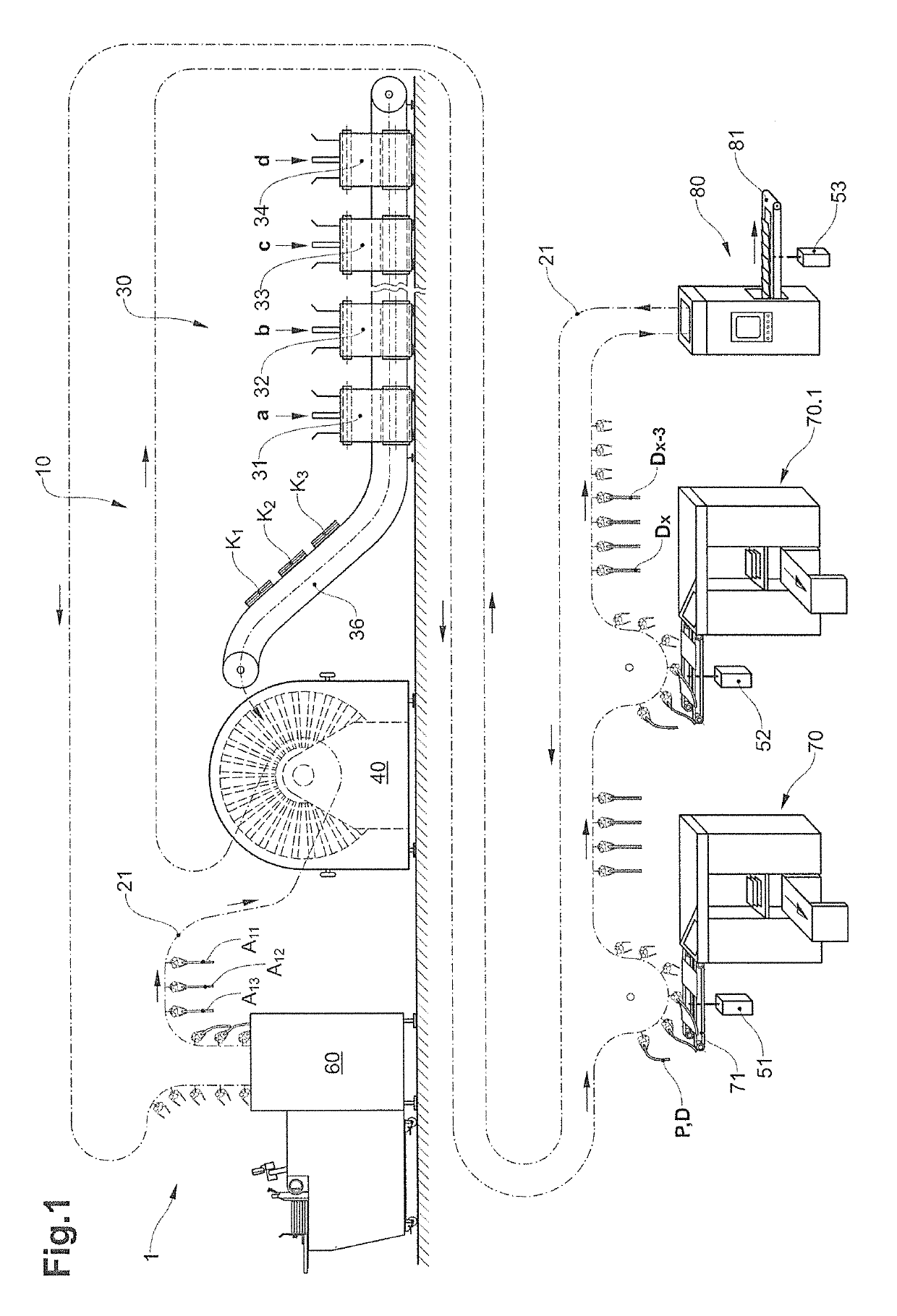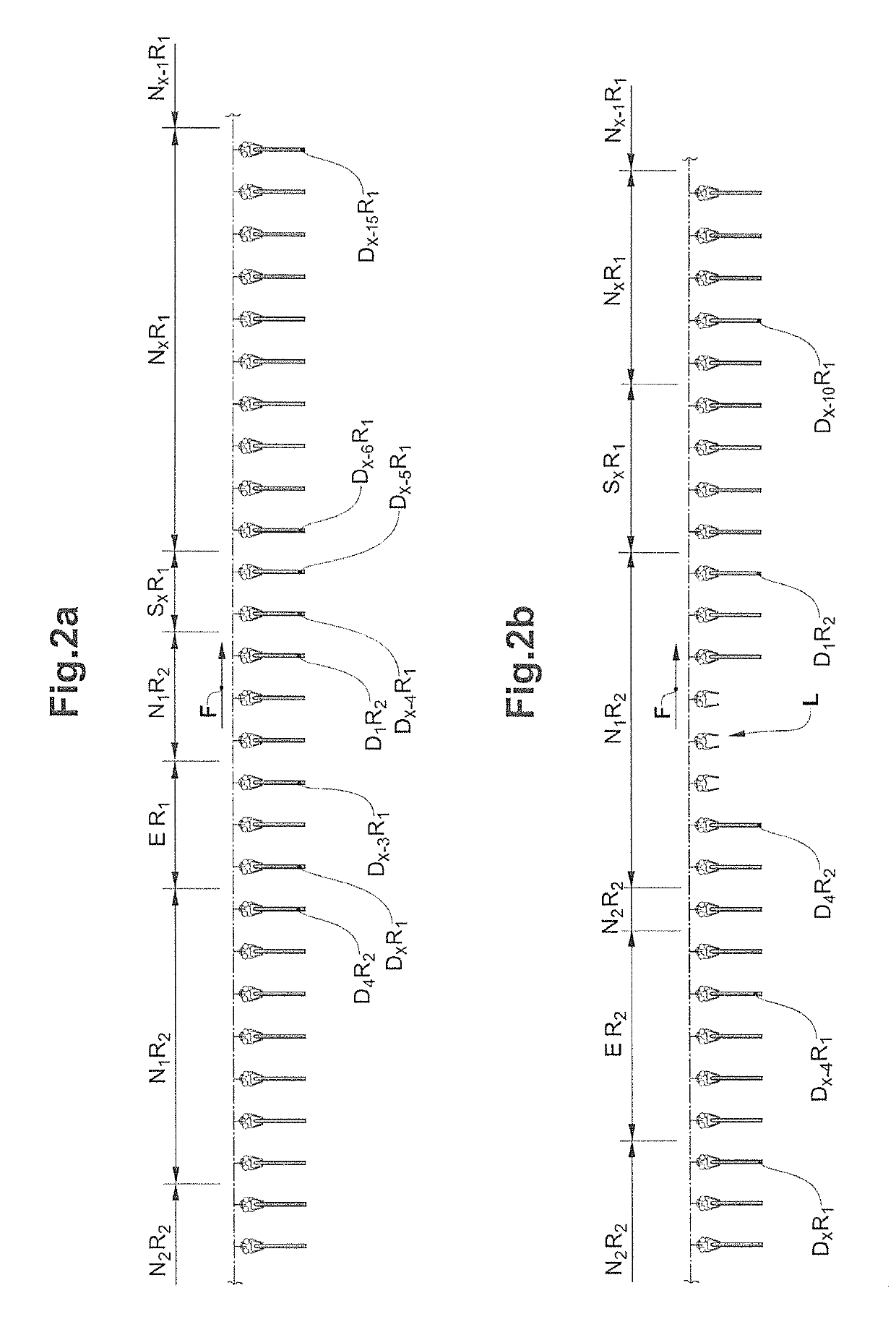Device and method for producing packages from flexible, flat objects
a flat object, flexible technology, applied in the direction of printing, instruments, resources, etc., can solve the problem that the sequence of individual product units inside the route is not relevant, and achieve the effect of reducing the overall output or processing speed of the postpress processing installation, facilitating the correction of defects in the creation of product units, and low equipment costs
- Summary
- Abstract
- Description
- Claims
- Application Information
AI Technical Summary
Benefits of technology
Problems solved by technology
Method used
Image
Examples
Embodiment Construction
[0046]Depicted in a side view in FIG. 1 is a first illustrative embodiment of a postpress processing installation 1 according to the invention. In a device 10 for the production of product units P in a manner adapted to the route along which they travel in the form of completed final printed products D such as periodicals and newspapers, which are compiled from a jacket product A and a plurality of part products and / or inserts a, b, d, the final printed products D according to a predetermined production plan are produced in a manner adapted to the route along which they travel.
[0047]Arranged along a collecting zone 30 are four feed devices 31, 32, 33, 34, each of which is able to discharge part products and / or inserts of types a, b, c and d respectively onto the belt conveyor 36 of the collecting zone. In the illustrated example, collections K consisting of part products and / or inserts of types a, b and d are produced in the collecting zone. The complete collections K are conveyed b...
PUM
| Property | Measurement | Unit |
|---|---|---|
| processing capacity | aaaaa | aaaaa |
| defect rates | aaaaa | aaaaa |
| defects | aaaaa | aaaaa |
Abstract
Description
Claims
Application Information
 Login to View More
Login to View More - R&D
- Intellectual Property
- Life Sciences
- Materials
- Tech Scout
- Unparalleled Data Quality
- Higher Quality Content
- 60% Fewer Hallucinations
Browse by: Latest US Patents, China's latest patents, Technical Efficacy Thesaurus, Application Domain, Technology Topic, Popular Technical Reports.
© 2025 PatSnap. All rights reserved.Legal|Privacy policy|Modern Slavery Act Transparency Statement|Sitemap|About US| Contact US: help@patsnap.com



